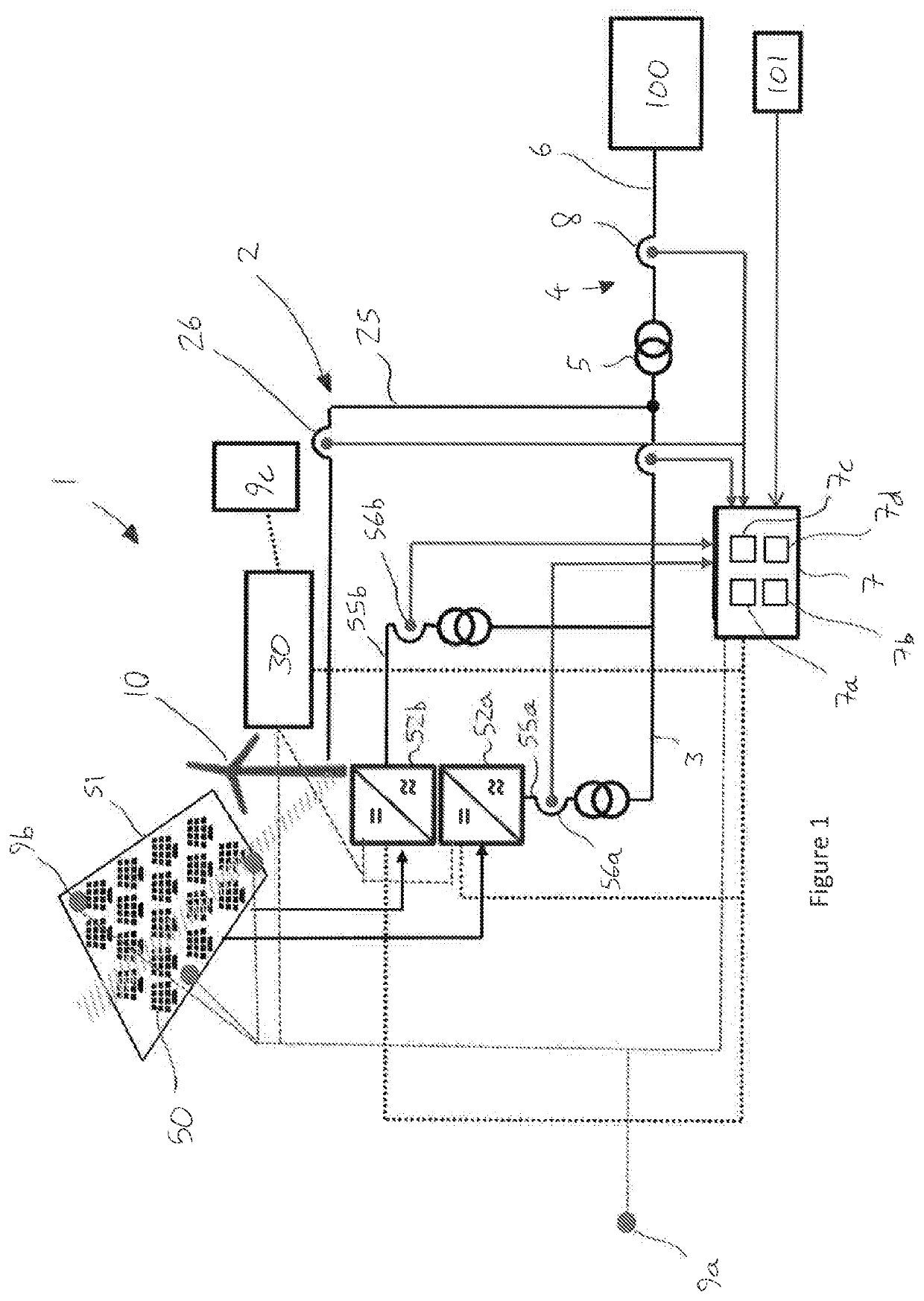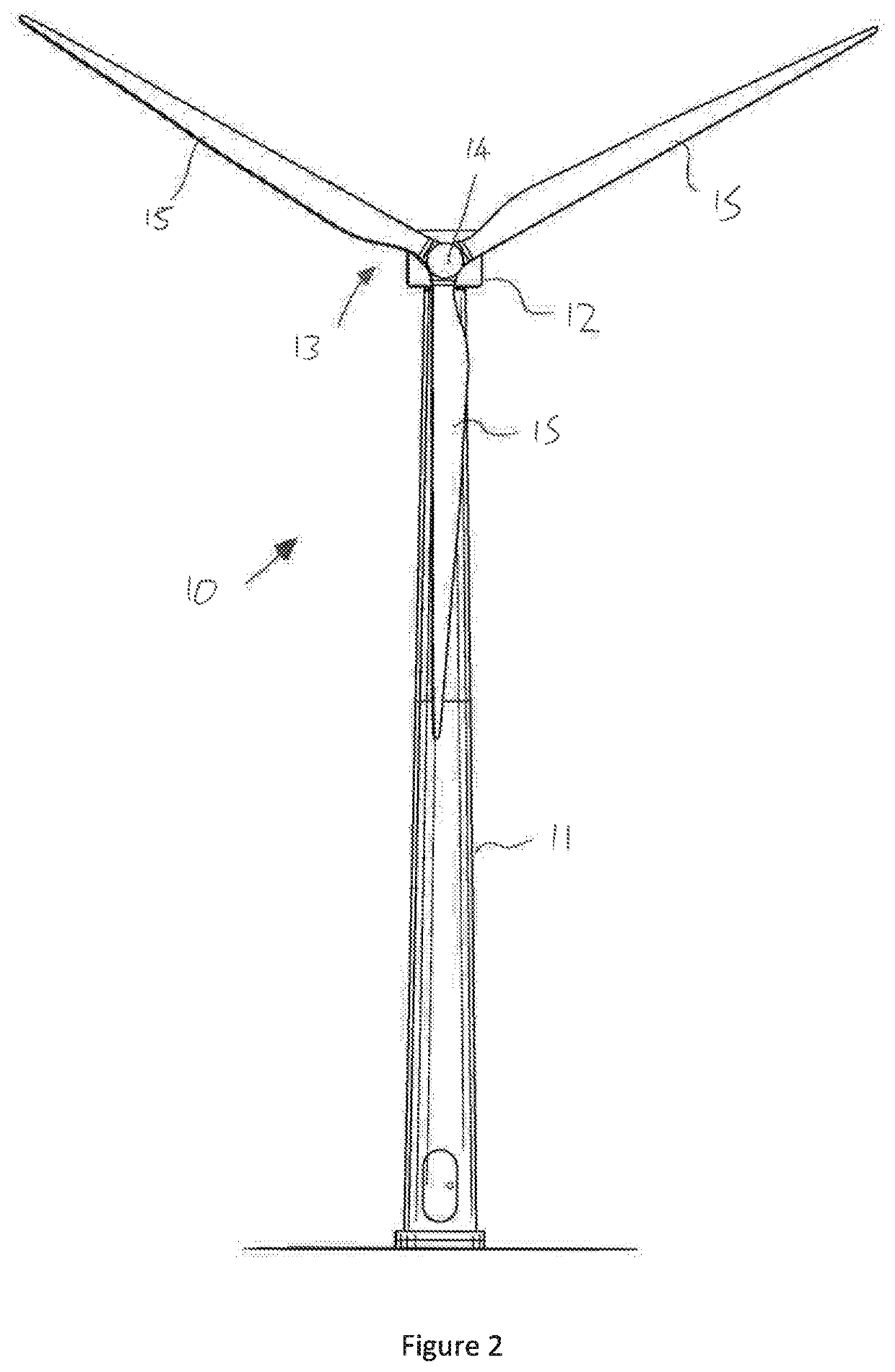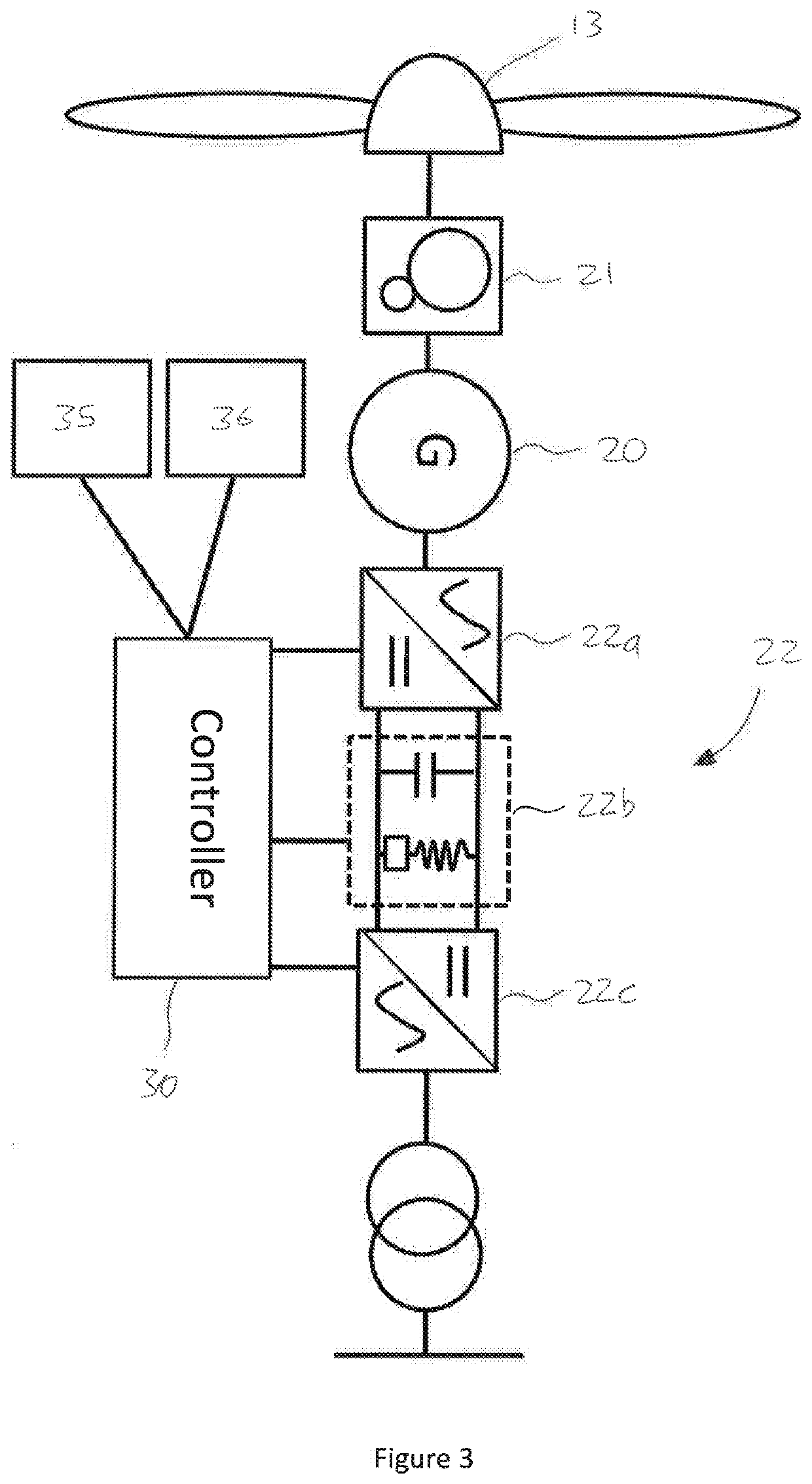Method of operating a hybrid power plant to optimise pv power output
a hybrid power plant and power output technology, applied in the direction of pv power plants, wind motors with solar radiation, machines/engines, etc., can solve the problems of affecting the pv modules, and further reducing the total pv power output, so as to achieve the effect of optimizing the power output of the pv modules
- Summary
- Abstract
- Description
- Claims
- Application Information
AI Technical Summary
Benefits of technology
Problems solved by technology
Method used
Image
Examples
Embodiment Construction
[0034]FIG. 1 schematically illustrates a simplified view of a portion of a hybrid power plant (HPP) 1 in accordance with an embodiment of the present invention. The HPP 1 is connected to an external power transmission network or main grid 100. The main grid 100 may be a regional, national or international power transmission network, for example the National Grid of Great Britain.
[0035]The HPP 1 comprises a plurality of wind turbine generators (WTGs) 10 and a plurality of segment 51 of PV modules 50. Each of the WTGs 10 and PV modules 50 is connected to a local grid 2 of the HPP 1 and configured to generate active power to be supplied via the local grid 2 to the main grid 100 for distribution. The local grid 2 is connected to the main grid 100 at a point of interconnection (Pol) 4 via a main step-up transformer 5 and a Pol bus 6.
[0036]For simplicity, FIG. 1 only illustrates a single WTG 10 and a single PV segment 51, both of which are connected to a single collector bus 3 of the loca...
PUM
 Login to View More
Login to View More Abstract
Description
Claims
Application Information
 Login to View More
Login to View More - R&D
- Intellectual Property
- Life Sciences
- Materials
- Tech Scout
- Unparalleled Data Quality
- Higher Quality Content
- 60% Fewer Hallucinations
Browse by: Latest US Patents, China's latest patents, Technical Efficacy Thesaurus, Application Domain, Technology Topic, Popular Technical Reports.
© 2025 PatSnap. All rights reserved.Legal|Privacy policy|Modern Slavery Act Transparency Statement|Sitemap|About US| Contact US: help@patsnap.com



